What can be done about LPS tower block safety issues?
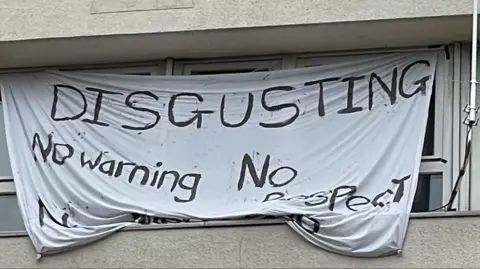 BBC
BBCMore than 100 tower blocks across the capital have been built with prefabricated concrete panels known as a Large Panel System (LPS), many of which could have safety issues, a BBC London investigation has found.
Not all LPS blocks are necessarily dangerous but their structure means they are more prone to defects and weaknesses. Blocks which have been strengthened or had remediation work may now be considered structurally sound.
Some LPS buildings have also degraded and cracks have developed in the panels, which poses a fire safety risk as the compartmentation fire containment system could fail.
It is a problem decades in the making, but now the full extent and impact of LPS is coming to light, what can be done?
What sparked the safety concerns?
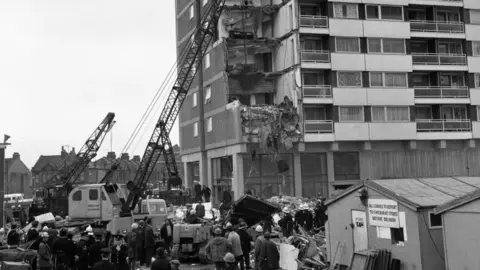 PA Media
PA MediaConcerns over LPS buildings come after Ronan Point in Newham, east London, partially collapsed following a gas explosion in 1968, in which four people died.
The same year, the government advised councils that such buildings should be strengthened and gas systems should be removed, as the structures were vulnerable to collapse if there was ever an explosion.
Since then some LPS buildings have also degraded and cracks have developed in the panels, which poses a fire safety risk as the compartmentation fire containment system could fail.
Following the Grenfell Tower fire in 2017, which claimed the lives of 72 people, risks in LPS buildings were raised again in a letter from government to local authorities, and in 2018 in the Hackitt Review.
How widespread are issues?
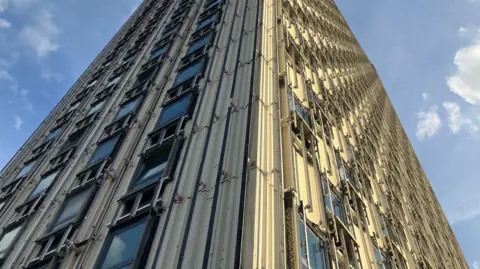
Data from the 31 London local authorities which responded to BBC London's request, showed they own 134 residential LPS tower blocks in the capital - and more than 30 of them still have gas systems installed.
Some may have had remediation work carried out but the full extent of this is unclear.
Westminster City Council said it has a programme to remove gas supplies from 24 of the 26 gas-supplied LPS blocks it owns by October 2025.
Patrick Hayes, from the Institution for Structural Engineers, explained there was a part-funded scheme set up after the Ronan Point tragedy and many buildings in England were strengthened.
However, issues with record-keeping mean it's not possible to ascertain how many participated in the scheme.
The issue doesn't just affect the capital - in the last few years residents have become aware of LPS in their tower blocks, or been evacuated from them in Bristol and Brighton.
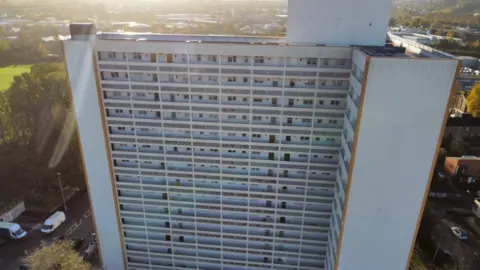 PA Media
PA MediaUnder the Building Safety Act 2022, tower block owners are legally required to register their building and tell the regulator if their building is an LPS one, as well as stating whether they have a gas system installed.
However, it is unclear how many LPS buildings exist in England, how many of them have gas systems installed, and how many of the buildings have not had full remediation work carried out on them.
Members of the public can search the register but it does not list information relating to LPS.
Hannah Brack, who has researched and campaigned on LPS buildings for decades, fears there are many and said: "The councils have, in many cases, been relying on consultants who have relied on previous surveys and reports.
"I feel things are undoubtedly changing but this does not make even one more night sleeping in a flat in an LPS block any safer."
Can LPS buildings be made safe?
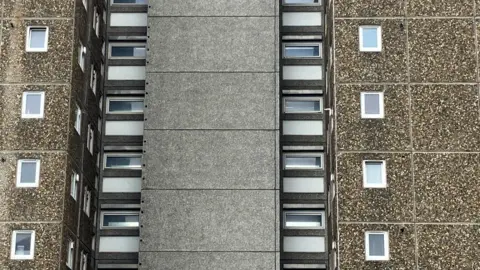
For some urgent remediation work is now needed on LPS buildings.
Mr Hayes said LPS buildings "tended to be tied (attached) in just one direction - so that allows the wall panels when they get hot to expand and move away from the floor panels, which create these gaps".
They can be remediated with various work including to strengthen the ties, and short-term repairs like filling cracks with fire-proof mastic.
But it is not clear how long-term a solution this is as the buildings continue to age and potentially degrade further.
Since new legislation required the registration of LPS buildings, Mr Hayes said those responsible for them "can get called in by the Health and Safety executive and Building Safety Regulator... to ensure they've been assessed and the risks have been managed".
"What we would say to residents is make sure your landlord is properly assessing them," he added.
Some councils which own LPS buildings have also put in extra safety measures such as a ban on gas bottles, and more recently, lithium batteries. Others have a 24-hour waking watch.
What can residents do?

The cost of remediation is high and many councils are opting to demolish the LPS blocks they own and build new homes.
In Edmonton, north London, some leaseholders in Walbrook House had to pay for new boilers when the gas system was replaced with an electric one, but claimed they were not fully informed that the changes were made because the building was constructed with LPS.
Those leaseholders are in the process of being bought out. But building surveyor and fire safety analyst Arnold Tarling inspected Walbrook House and said he believed they may have a strong case if they challenged the council.
"It's shocking the way leaseholders have been treated," he said.
"They are not being offered enough. What can you get in London for £231,000?"
Enfield Council denied misinformation, and said it supported leaseholders on a case-by-case basis.
"The buyout deal from Enfield Council to leaseholders offers good market value plus a home loss and disturbance payment, and all fees are compensated for.
"If a financial assessment determines they are unable to replace their property with something similar the Council will help them explore shared equity options."
Meanwhile in Peckham, south London, temporary tenants were moved onto the Ledbury Estate after safety changes were made due to LPS in the blocks.
Many of them complained of cracks in the walls, cold, water leaks, electrical issues and damp.
Independent housing consultant Tony Bird, who has worked with social housing tenants for decades, added those tenants "have been badly treated and should be due compensation for what they have been through".
What do experts say?

A London Fire Brigade spokesperson said despite the Grenfell Tower fire and subsequent inquiry, many people are still living in potentially unsafe high-rise buildings which was "not an acceptable situation".
"The issue extends beyond compartmentation issues caused by the use of LPS buildings or the well documented risks around flammable cladding," they continued.
"Many properties face challenges, such as unsafe materials used for insulation, problems with ventilation and missing cavity barriers.
"Remediation measures must be prioritised to address critical safety concerns, such as those associated with Large Panel System constructions.
Mr Tarling said if residents suspect their blocks may be LPS buildings they "should be asking your landlord, 'is it a risk?'"
Ms Brack said: "There needs to be a spirit of co-operation and information sharing between the boroughs, as they are all about to spend a fortune on consultants who will be telling them the same thing.
"Any reports should be made available for reference by all the boroughs, perhaps via the Building Safety Regulator who I know have been gathering as much info on LPS as they can."
What happens next?

The Institution of Structural Engineers said under new legislation owners of higher-risk buildings (HRBs), including all tower blocks, must apply for a safety certificate from the Building Safety Regulator.
This includes assessments on structural performance in a fire or after an accidental event, but the regulator said it will take time as there are thousands of HRBs to be assessed by 2029.
While leaseholders who own properties in the blocks are being bought out, and tenants are being rehoused by local authorities, some councils say this is being made more complicated amid financial struggles and a short supply of social housing.
Councillor Grace Williams from London Councils, which represents local authorities across the capital, said the situation "can't be justified".
"The right thing to do is for the councils to be clear what the situation is, with tenants and leaseholders, and be clear about the actions they're taking," she explained.
"We also know we need to work even harder with the government, the Greater London Authority and the regulator."
A Ministry of Housing, Communities and Local Government spokesperson said: "We take the safety and security of people living in high rise buildings incredibly seriously.
"Building owners have a responsibility to make sure their buildings are safe, including [those] built with Large Panel Systems.
"Where decants occur, we play an active role in supporting local regulators and residents, and the safety and wellbeing of residents is at the core of all our work."
Listen to the best of BBC Radio London on Sounds and follow BBC London on Facebook, X and Instagram. Send your story ideas to [email protected]
